Painting Galvanized Steel - Surface Preparation
Successfully painting hot-dip galvanized steel, also known as a duplex system, does not have to be difficult or confusing. Just like painting over bare steel, proper surface preparation is crucial to ensuring effective adhesion. Additionally, slightly different methods may be recommended according to the condition of the galvanized surface (newly galvanized, partially weathered galvanizing, fully weathered galvanizing). The specification ASTM D6386 provides all of the detail to properly prepare the hot-dip galvanized surface for paint. The AGA offers Preparing HDG Steel for Paint, a package that includes an instructional guide booklet and step-by-step DVD video on how to prepare the hot-dip galvanized steel surface for paint.
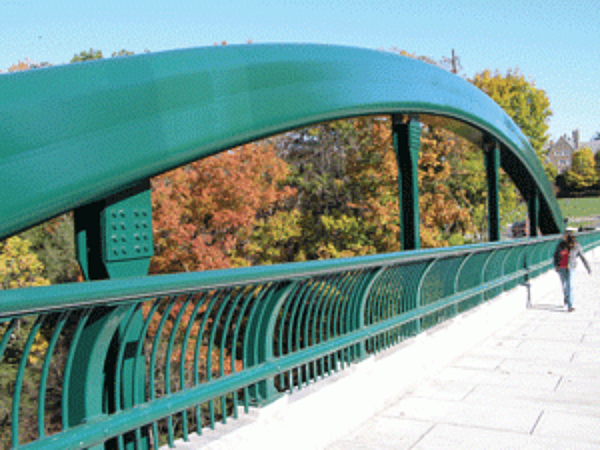
Creating a successful duplex system requires following five steps:
- Communicate with the galvanizer
- Determine the condition of the surface
- Clean the surface
- Profile the surface
- Paint
Communicate with the galvanizer
If hot-dip galvanized steel is going to be painted, communication between the fabricator, specifier, painter, and galvanizer is vital before galvanizing. The various parties may desire special handling or require alterations to the design to facilitate the galvanizing process and/or the application of paint. Furthermore, if the galvanizer is aware the part will be duplexed, precautions can be taken to avoid post-treatments that may interfere with the adhesion of the paint system.
Additionally, there are two surface imperfections that can inhibit paint adhesion; dross and skimming inclusions. These imperfections can be acceptable on parts specified for hot-dip galvanizing, but cause issues when the part is duplexed. If the galvanizer knows the part is specified for duplex, dross inclusions can be ground flat and skimmings removed prior to painting.
Determine the condition of the coating
As galvanized steel weathers naturally, byproducts develop on the surface creating the zinc patina. Throughout this weathering process, there are different elements present on the galvanized surface. Each of the galvanized surface conditions: newly galvanized, partially weathered, or fully weathered have different cleaning and/or profiling requirements. Therefore, properly identifying the surface condition is important.
Newly Galvanized
Newly galvanized steel has been exposed to the atmosphere for no more than 48 hours and has few zinc compounds on the surface. The coating can be bright and shiny, indicating an all-zinc outer layer, or dull gray, indicating a zinc-iron intermetallic outer layer, or a combination of both. Newly galvanized surfaces have few or no zinc compounds on the surface simplifying the cleaning but are relatively smooth so profiling is necessary to ensure adherence.
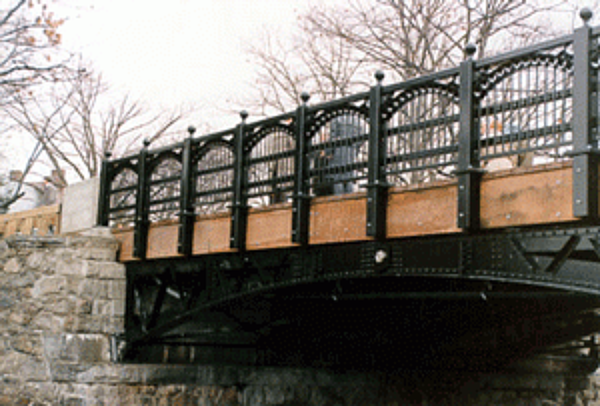
Partially Weathered
Partially weathered galvanized surfaces have a build-up of zinc compounds and, possibly, organic contaminants such as dirt, dust, oil, or grease. The compounds become attached to the zinc coating by electrostatic forces and can be expected to release from the surface over time. The zinc compounds, mostly zinc oxide and zinc hydroxide, must be removed before painting. Partially weathered galvanized steel is the most common galvanized surface condition when painting, and also the most difficult to prepare. The partially weathered surface condition is present from two days to about one year after galvanizing, depending on temperature variation and humidity factors.
Fully Weathered
Fully weathered galvanized steel has zinc compounds covering the entire surface. The main compound in the fully weathered surface is zinc carbonate. Zinc carbonate tightly adheres to the surface, is not water soluble, and does not wash off the surface when water hits the part. In this state, the zinc compounds should not be removed, as the paint performs better when the compounds are left on the surface. Fully weathered galvanized coatings are the simplest surface condition to paint, as only mild cleaning is necessary. This condition is present from one year of exposure to the atmosphere until all the zinc coating has been consumed by protecting the underlying steel, which will take decades.
Clean the surface
Once the condition of the galvanized surface has been properly identified, the next step is to clean the surface. As stated before, each of the three different surface conditions requires a different level of cleaning. If the surface condition cannot be determined, all cleaning steps must be followed. The steps to cleaning the surface for each condition are as follows:
- Remove bumps, runs, and drips (newly, partially weathered)
- Remove organic materials (partially weathered, fully weathered)
- Rinse and dry (all conditions)
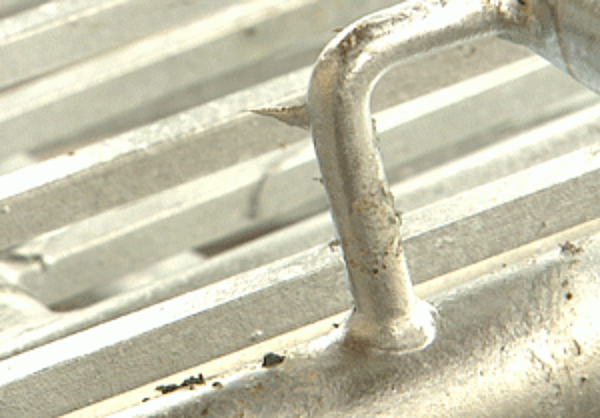
Upon withdrawal from the zinc bath, sometimes excess zinc is present in small bumps, runs, or drips. These imperfections will be visible and/or could protrude through the paint coating; and therefore, must be removed prior to painting the part. Runs, drips, or bumps can be removed by grinding or filing the surface smooth and flat. Since pure zinc is a soft metal, care must be taken to remove the excess zinc material and leave a flat surface without removing the underlying zinc coating. The most common practice for removal is to use a hand grinder and lightly abrade away the excess zinc until the surface is flat and smooth. This must be completed before the removal of organic compounds, so the dust and powder can be removed by chemical cleaning.
Once the galvanized surface is smooth, the part may require removal of organic contaminants. Organic contaminants can be removed with an alkaline solution, acidic solution, or solvent cleaning.
Alkaline Solution
A mild alkaline solution, a mixture of ten parts water and one part alkaline cleaner, can remove all organics from the surface without damaging the galvanized coating. The alkaline solution can be brush applied or used with a power washer; however, if power washing the pressure must be held below 1450 PSI to ensure the zinc coating is not damaged.
Acidic Solution

Organic contaminants can also be removed with a mild acidic solution, a mixture of 25 parts water to one part acid. The acidic solution will also slightly etch the zinc coating and leave the surface a dull gray color. Acidic solutions are usually brush applied and should be thoroughly rinsed off the part with fresh water no later than two to three minutes after application. It is good practice to rinse the part twice after using acidic solutions for cleaning.
Solvent Cleaning
Finally, solvent cleaning, applying solvents to the surface using a clean cloth, can be used. The cloth will pick up the organics, so it must be changed often to avoid re-depositing organics back onto the galvanized surface.
The final cleaning step is a freshwater rinse to remove any remaining cleaning solutions or dust from grinding. When using acid cleaning solutions, a second fresh water rinse is recommended to remove all traces of the acid cleaner. After the fresh water rinse, the part should be dried before proceeding to the profiling step. The time after drying until the part is painted should be kept to a minimum (no more than 12 hours) to avoid any further development of zinc compounds on the surface.
Profile the surface
Upon completion of cleaning, the galvanized surface must be profiled to provide an anchor for the paint. Profiling the surface means to roughen all surfaces to be painted to promote better paint adhesion. There are four potential methods to profile the surface for paint: sweep blasting, wash primer, acrylic pretreatment, and surface grinding.
Sweep Blasting
Sweep blasting is the most common method, but care is required to not damage the relatively soft zinc coating. Unlike standard blasting, which uses a 90-degree angle, sweep blasting galvanized steel is done at an angle of 30 to 60 degrees. Additionally, the abrasive material must be chosen carefully, as some shot materials are too abrasive. Materials should have a particle size between 200 to 500 micrometers and a Mohs hardness of five or less.
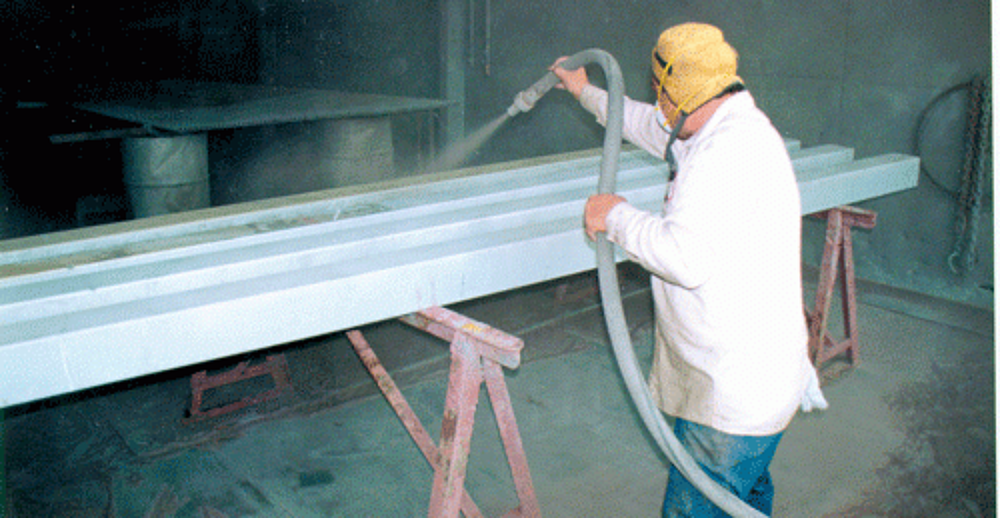
Wash Primer
Wash Primer is another method used to profile the surface. The process is based on three primary components: a resin, a pigment, and an acid. These three components react with the zinc surface to form a thin film no more than 13 microns thick. The wash primer may be applied successfully using a spray, and can also be applied by using a brush or roller. The drying time for this system before painting depends on the particular product and the manufacturers recommendation.
Acrylic Pretreatment
Acrylic Pretreatment has an acidic element that etches and roughens the galvanized coating and then deposits an acrylic layer to facilitate paint adhesion. The application methods for these water-based treatments are dipping, flow coating, spraying, or other appropriate means. Following application, the acrylic passivation coating is dried in an oven or by air before painting.
Grinding
Finally, if necessary, power tools such as grinders or sanders can be used to roughen the surface of the galvanized steel to produce a surface profile suitable for paint adhesion. A removal of up to 1 mil is acceptable, but the grinder should not be applied with enough force to completely strip the zinc coating.
Paint
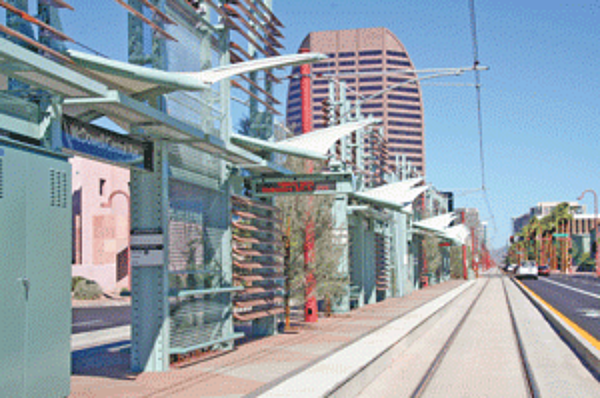
After the surface of the galvanized part has been cleaned and roughened to provide a profile, the part is ready for painting. Paint can be applied by brushing or spraying onto the galvanized surface. Painting should begin as soon as possible after cleaning and profiling.
There are a number of paint formulations compatible with hot-dip galvanized coatings; however, because paint formulations change constantly, consult the paint manufacturer for compatibility as well as for recommendations regarding air conditions and application methods.
Determining the Presence of Passivation Agents
Although some passivation-quenched galvanized surfaces have a duller, matte gray finish, it can be difficult to visually detect whether passivation products have been used. If there is uncertainty regarding whether the steel was quenched, the galvanized surface needs to be tested for the presence of passivation agents. This testing is fairly clear-cut and is described in ASTM B201.
